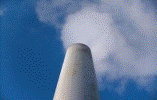|
CALPUFF Training Presented by TRC

CALPUFF is a non-steady-state modeling system, developed by TRC scientists,
that is being used for a wide variety of air quality modeling studies,
including toxic pollutant deposition, near-field impacts from point, line,
area, and volume sources, forest fire impacts, visibility assessments,
and long range transport studies. This system is a comprehensive modeling
tool that includes meteorological and geophysical data processors, a meteorological
model, a puff-based dispersion model, and postprocessing modules.
TRC is pleased to offer an intensive three day training course
that includes hands-on application of the models and provides an introduction
to their technical basis. Attendees of the course will receive a training
workbook that includes example applications, updates on recent model enhancements,
and the latest versions of the models and Graphical User Interfaces (GUIs).
Major Features of the CALPUFF Model
|
Recent Developments - CALPUFF
|
Point, area, volume, and line sources |
Buoyant area source algorithm |
Non-steady-state emissions and meteorological conditions |
Buoyant line source capability |
Calm wind algorithm |
Wind shear effects - Puff splitting |
Causality effects |
ISC input conversion program |
Efficient sampling functions |
BPIP interface |
Dispersion coefficient options |
Split sigmas |
Boundary layer turbulence |
Output data compression |
Vertical wind shear |
|
Plume rise |
Recent Developments - CALMET |
Building downwash |
MM4/MM5 interface |
Subgrid scale complex terrain(CTDM) |
Use of satellite cloud data |
Dry deposition |
Similarity theory options |
Overwater and coastal interaction effects |
Map factors |
Chemical transformation options |
Interpolation of precipitation data |
Wet removal |
Slope flow improvements |
Visibility |
Terrain angle, orientation and shadowing effects |
Graphical User Interfaces |
|
For questions or comments, please contact asg@trcsolutions.com.
~ Last updated: January 16, 2007 ~
|















































